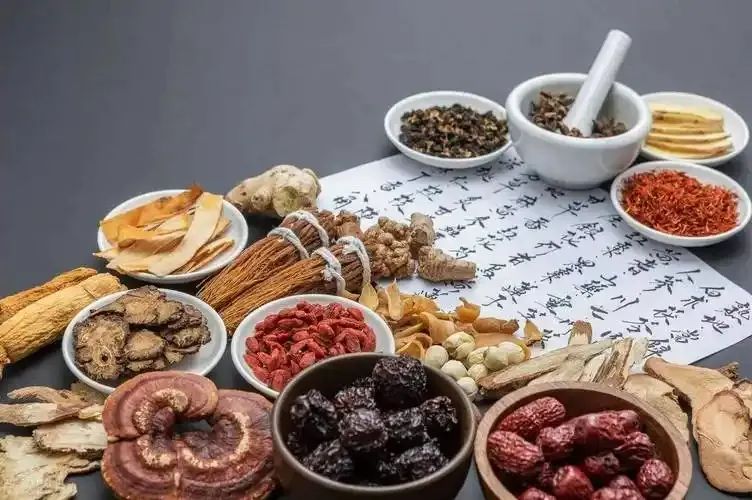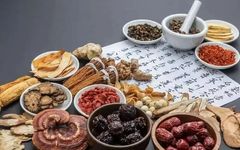Distinguishing Qi and Blood Deficiency in 3 Minutes: Key Conditioning Secrets Revealed
In the field of Traditional Chinese Medicine (TCM), Qi (气) and Blood (血) are essential substances that sustain human life activities. However, many people are unclear about the concepts of Qi deficiency (气虚), Blood deficiency (血虚), and combined Qi and Blood deficiency (气血两虚), which leads to confusion in health maintenance. Today, we will teach you how to clearly distinguish these three bodily states in just 3 minutes and share corresponding conditioning secrets.

1. Symptoms and Nourishment of Qi Deficiency
Qi deficiency primarily manifests as insufficient vitality and reduced function. Common symptoms include shortness of breath and reluctance to speak, feeling breathless even with slight activity; fatigue and lack of energy, feeling tired throughout the day; spontaneous sweating, sweating even at rest, with increased sweating during activity; dizziness and lightheadedness, feeling heaviness in the head; pale or sallow complexion, lacking luster.
For those with Qi deficiency, dietary adjustments can include consuming foods that tonify Qi, such as Shan Yao (山药, Chinese Yam). Shan Yao is rich in amylase and polyphenol oxidase, which can strengthen the spleen and stomach, nourish the kidneys, and can be cooked as porridge or soup. Huang Qi (黄芪, Astragalus) can also be used to tonify lung Qi and stabilize the exterior to stop sweating; it can be stewed with chicken to enhance its Qi-tonifying effects.
In terms of exercise, gentle activities such as Tai Chi (太极拳) are suitable. Tai Chi involves slow, gentle movements that can regulate breathing, promote Qi and Blood circulation, and enhance physical fitness. Ba Duan Jin (八段锦) is also a good choice, as its stretching and twisting movements help regulate Qi flow.
Maintaining a regular schedule is equally important; ensure adequate sleep and avoid overexertion. Nighttime is when the body repairs Qi and Blood, and going to bed early allows for better nourishment.
2. Symptoms and Nourishment of Blood Deficiency
Blood deficiency primarily refers to insufficient blood volume or reduced nourishing function of the blood. Common symptoms include pale or sallow complexion, pale lips and nails; dizziness, especially noticeable when standing up suddenly or after squatting for a long time; palpitations and insomnia, with an uneasy heartbeat and poor sleep quality; scanty menstruation or even amenorrhea.
In terms of diet, Hong Zao (红枣, Red Dates) is an excellent blood-nourishing food, rich in iron and other nutrients, which can be eaten directly or cooked with Gui Yuan (桂圆, Longan) to nourish blood and calm the spirit. Hei Zhi Ma (黑芝麻, Black Sesame) is also rich in iron and vitamin E; it can be toasted and ground for consumption, benefiting the liver and kidneys and nourishing essence and blood.
For emotional regulation, those with Blood deficiency should maintain a cheerful disposition. Long-term anxiety and depression can affect liver function, thereby impacting blood production and circulation. Activities such as listening to music or walking can help alleviate emotions.
Additionally, appropriate massage can aid in nourishing blood. For example, massaging the Xue Hai (血海, Blood Sea) point, where Qi and Blood converge, can promote blood generation and circulation; each massage session should last 3-5 minutes until a sensation of soreness or distension is felt.
3. Differentiation and Treatment of Combined Qi and Blood Deficiency
Combined Qi and Blood deficiency presents symptoms of both Qi deficiency and Blood deficiency, such as general weakness, susceptibility to illness, and poor resistance; dry, lifeless hair; dry and rough skin.
For dietary conditioning, the approach of Ba Zhen Tang (八珍汤, Eight Treasure Decoction) can be adopted, using ingredients like Dang Shen (党参, Codonopsis), Bai Zhu (白术, Atractylodes), Fu Ling (茯苓, Poria), Zhi Gan Cao (炙甘草, Honey-fried Licorice), Dang Gui (当归, Angelica), Chuan Xiong (川芎, Ligusticum), Bai Shao (白芍, White Peony), and Shu Di Huang (熟地黄, Rehmannia). This combination of herbs can tonify both Qi and Blood, achieving a dual replenishing effect.
In daily health maintenance, moxibustion (艾灸) is an effective method. Moxibustion on points such as Guan Yuan (关元, Conception Vessel 4), Qi Hai (气海, Conception Vessel 6), and Zu San Li (足三里, Stomach 36) can warm Yang, benefit Qi, and nourish Blood while regulating menstruation. Each point should be moxibusted for 10-15 minutes until the local skin feels warm but not burned.
At the same time, it is important to balance work and rest, avoiding excessive consumption of Qi and Blood. Whether in work or life, time should be managed reasonably, with adequate rest to allow the body sufficient recovery time.
It is important to note that the content of this article is for health education purposes only and should not be used as a clinical diagnosis or medical basis. If you have concerns about your health status, it is recommended to consult a professional physician for a more accurate and personalized health conditioning plan. By correctly distinguishing between Qi deficiency, Blood deficiency, and combined Qi and Blood deficiency, and adopting appropriate conditioning methods, we can better care for our health and improve our quality of life.

